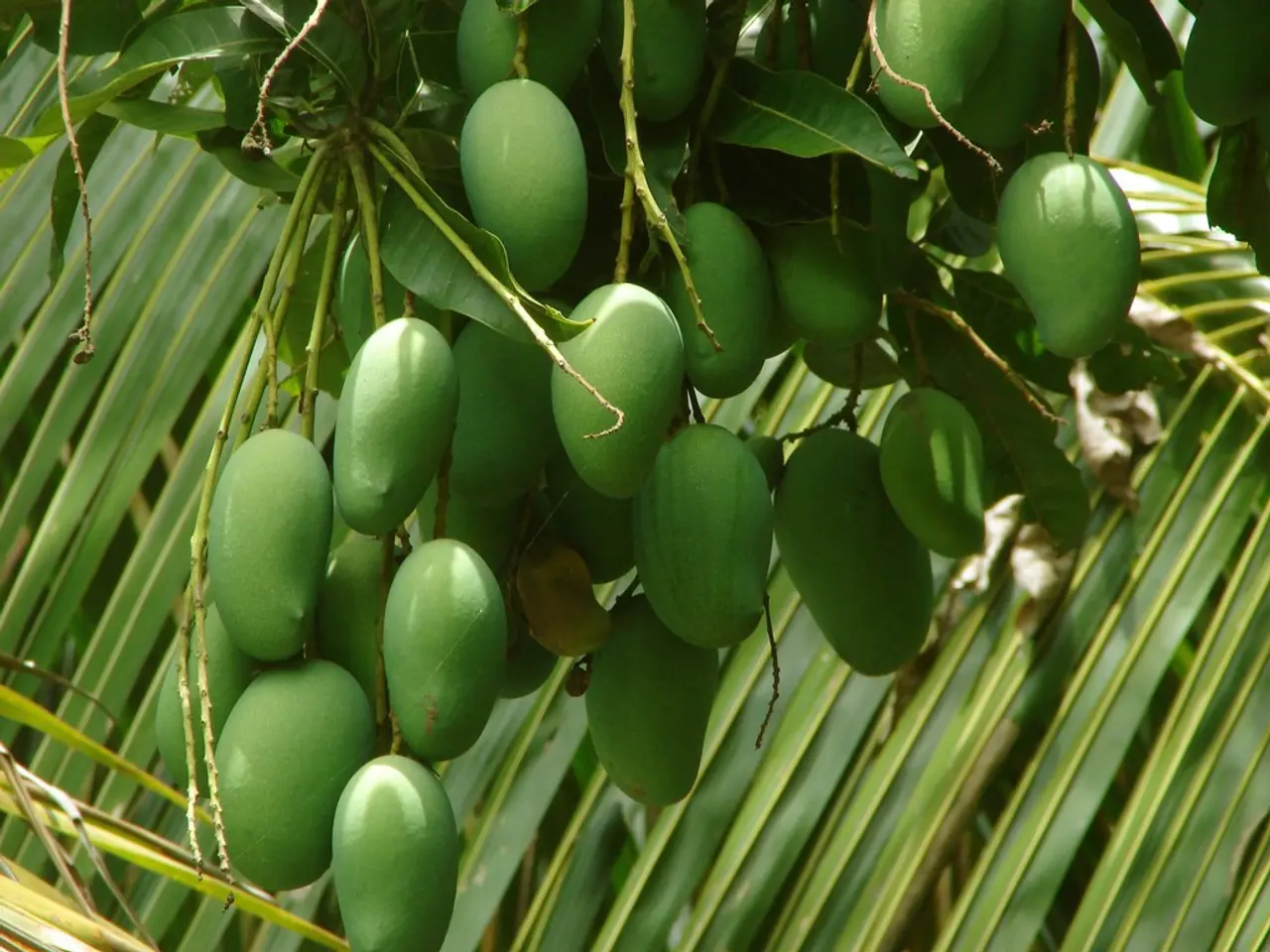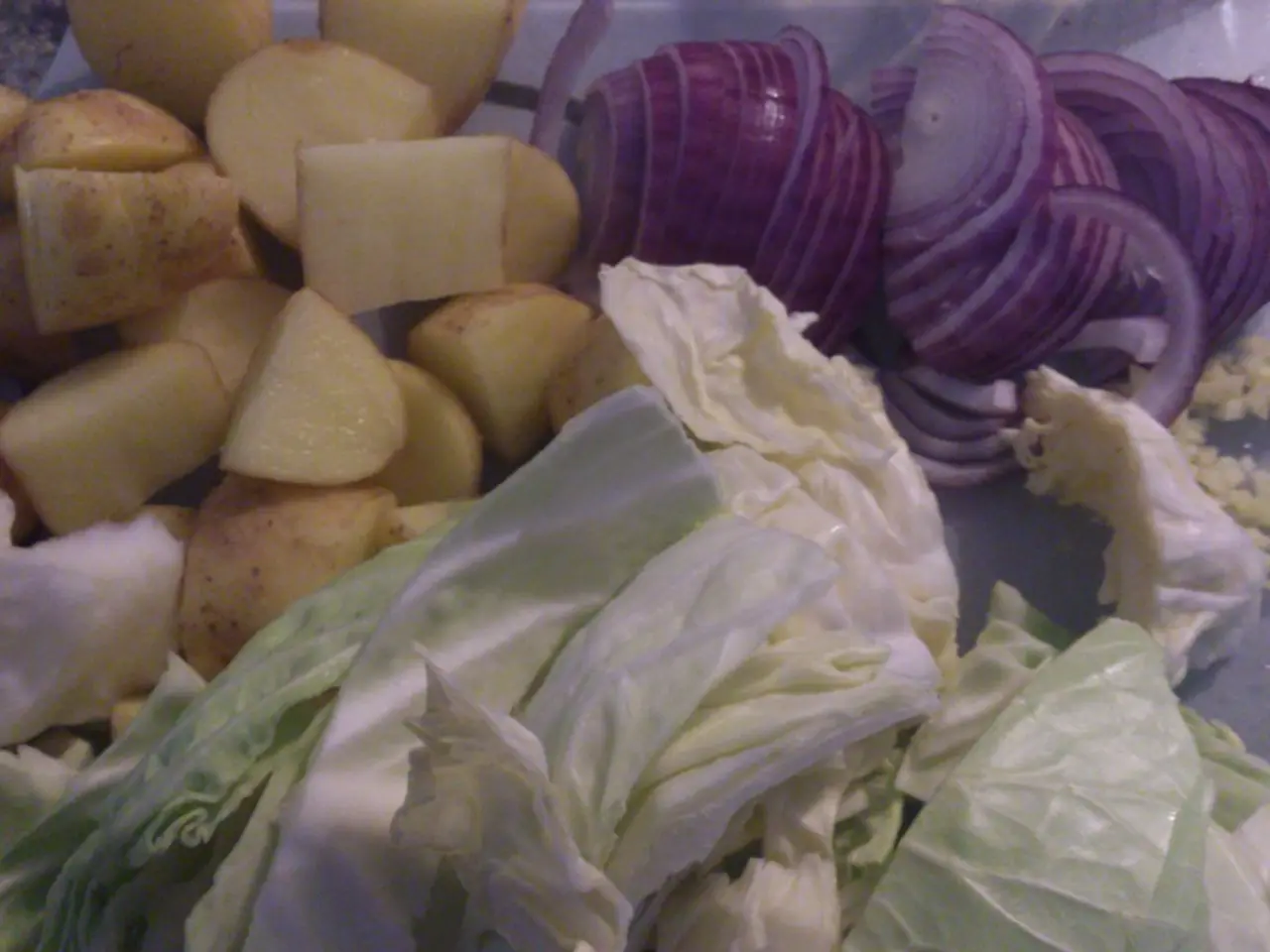Best Practices for Cultivating Mango Orchards for Maximum Production
In the world of fruit cultivation, mango trees hold a special place. To ensure high-quality and consistent yields, responsible and integrated practices are essential.
Proper Orchard Planning and Soil Preparation
Establishing a new mango orchard involves careful planning and soil preparation. During April-May, dig pits (1m x 1m x 1m) and keep the top 2 feet of soil separate. After 1-1.5 months, mix this soil with 10-15 kg of farmyard manure (FYM), 200-250 g neem cake, and 100-150 g bone meal for refilling. This simple process improves the soil's fertility, setting the stage for a thriving mango orchard.
Routine Pruning and Fruit Thinning
Regular pruning and thinning practices are vital for enhancing growth and yields. Proper pruning maintains tree vigor, reduces excessive fruit load, and improves fruit size and quality. Fruit thinning, the removal of excess sprouts and regular fruits, leads to better, more noticeable mangoes. Pruning should be carried out during the post-harvest season to shape the trees and remove damaged or dead branches.
Disease and Pest Management
Vigilant monitoring and timely control of pests and diseases are crucial for maintaining plant health and preventing yield loss. For example, managing brown spots on stems caused by fungal or bacterial infections, or infestations like brown scale insects, can help maintain plant health and prevent yield loss. Advanced methods like AI and drone technology can aid early detection and intervention.
Use of Commercial Agricultural Inputs
The application of recommended fertilizers and agrochemicals according to soil tests and local guidelines boosts tree nutrition and resilience, thereby supporting higher yields.
Consistent Management and Investment
Regular farm management, including timely irrigation, nutrient management, and upkeep, tends to increase returns significantly after the initial years, with peak productivity observed around years 8-10. Integrated approaches like intercropping can also supplement income and optimize land use.
Harvesting and Post-Harvest Care
During the harvest, mangoes should be picked when they're most accessible to guarantee better taste and quality. Mangoes should be handled with care to prevent injuries and maintain their quality. Managing the canopy allows control over the spread and level of the trees, facilitating easier monitoring and gathering.
Effective Pest and Disease Management
Effective pest and disease management is necessary for mango tree health and overall yield. A preemptive, integrated pest management framework should be adopted to maintain plant health and prevent yield loss.
Water Management
Inquisitively, during dry seasons, watering should be increased to aid with tree improvement. Conversely, during the storm season, watering should be reduced to prevent excessive moisture, which might encourage root deterioration. Using spill water structure frameworks reduces water waste by providing the root zone with controlled soaking quality levels.
Soil Testing
Standard soil testing is necessary to determine the pH level, supplement content, and any requirements. Mango trees thrive in soil with a pH between 5.5 and 7.5. Adding regular manure and dung to the soil improves its structure, increases receptiveness to supplements, and promotes improved root development.
In summary, integrated orchard establishment involving careful soil amendment, systematic pruning and thinning, vigilant pest/disease control, and consistent management tied to appropriate fertilization are the main pillars for achieving high-quality, consistent mango yields. Utilizing precision agriculture technologies to support these practices is increasingly important for optimizing health and productivity in 2025 and beyond.
Gardening and maintaining a mango orchard can significantly improve lifestyle, creating an attractive home-and-garden space. By carefully planning the orchard and performing regular pruning, thinning, and disease management, you can ensure a thriving mango farmland, elevating your gardening skills and contributing to healthy, abundant yields.




